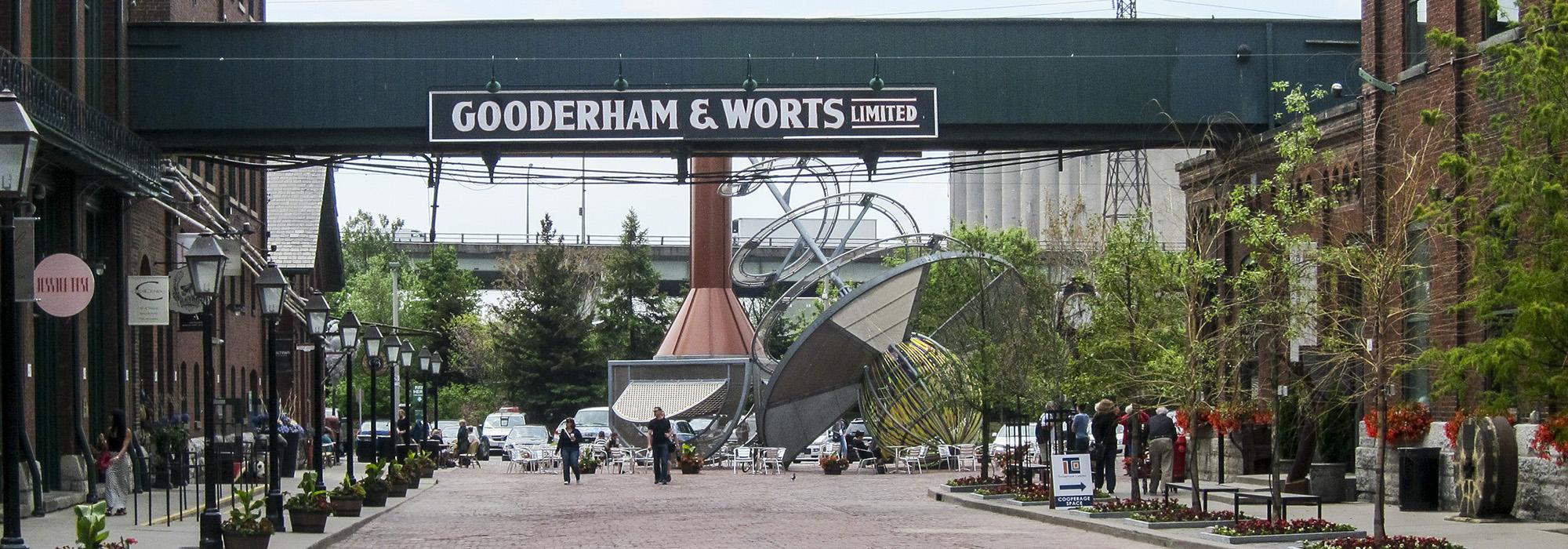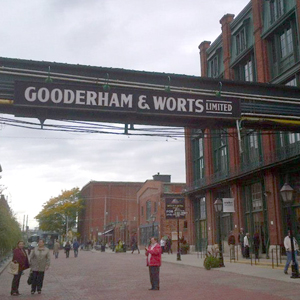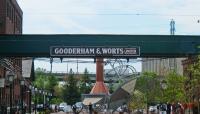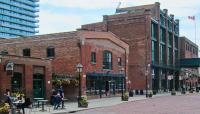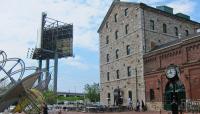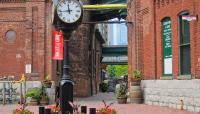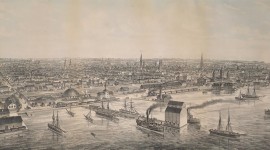Landscape Information
This 5.25-hectare parcel of industrial buildings in downtown Toronto was home to the Gooderham and Worts Distillery, which operated from 1837 to 1990. James Worts purchased the site in 1832 as the location for a gristmill; his partner and brother-in-law William Gooderham converted it to a whiskey distillery after Worts’ untimely death. Between 1859 and 1895, architects David Roberts, Sr. and David Roberts, Jr. designed and constructed an industrial campus, the earliest structures being the limestone gristmill and distillery. The growth of the industrial campus resulted in the extension of the shoreline southward some 500 meters as new wharves were added. The distillery closed in 1990 and was purchased in 2001 by the development corporation Cityscape, which initiated the large-scale, adaptive re-use of the site, led by the architectural firm ERA.
Today, more than 40 buildings from the nineteenth-century complex remain intact. The stone distillery, rack houses, and other buildings now accommodate office, retail, and residential spaces connected by courtyards and pedestrian avenues lined by trees, planting beds, contemporary backless benches and Victorian-inspired lampposts. Several open plazas punctuated with large-scale focal point sculptures lie at the junction of major streets, flanked by commercial development. Continuous structural facades and the use of brick and limestone create a unified and coherent design aesthetic. Traces of the original windmill, demolished in the early 1860s when steam replaced wind power, have been discovered through archaeological investigations. The distillery complex was designated a heritage property under the Ontario Heritage Act in 1976, and a National Historic Site of Canada in 1988.



